February 19, 2023
Martha O'Kennon
What a week! We had several days in which the temperature soared to 55 F by noon, and on some of those days the sun came out, helping me to visualize pictures much better on this still-new camera. But now the ten-day forecast is for 10 days in which the temperature doesn't rise above the 30's F. Today, in fact, it is snowing lightly.
The Ants only showed up for a few minutes on two days this week. Only one kind -- The American Winter Ants. They are so aesthetic-looking, I really love them. It's still too early to see them carrying around prey or other food, but the way they hold themselves tickles me!
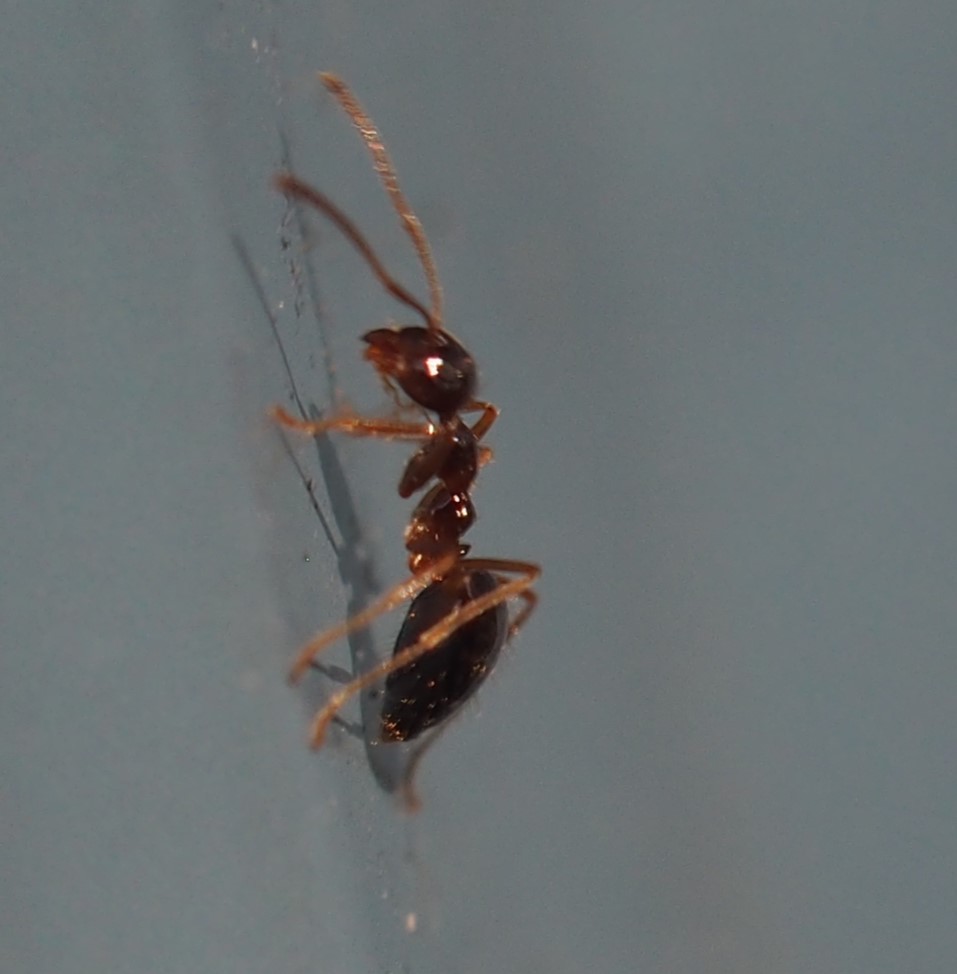
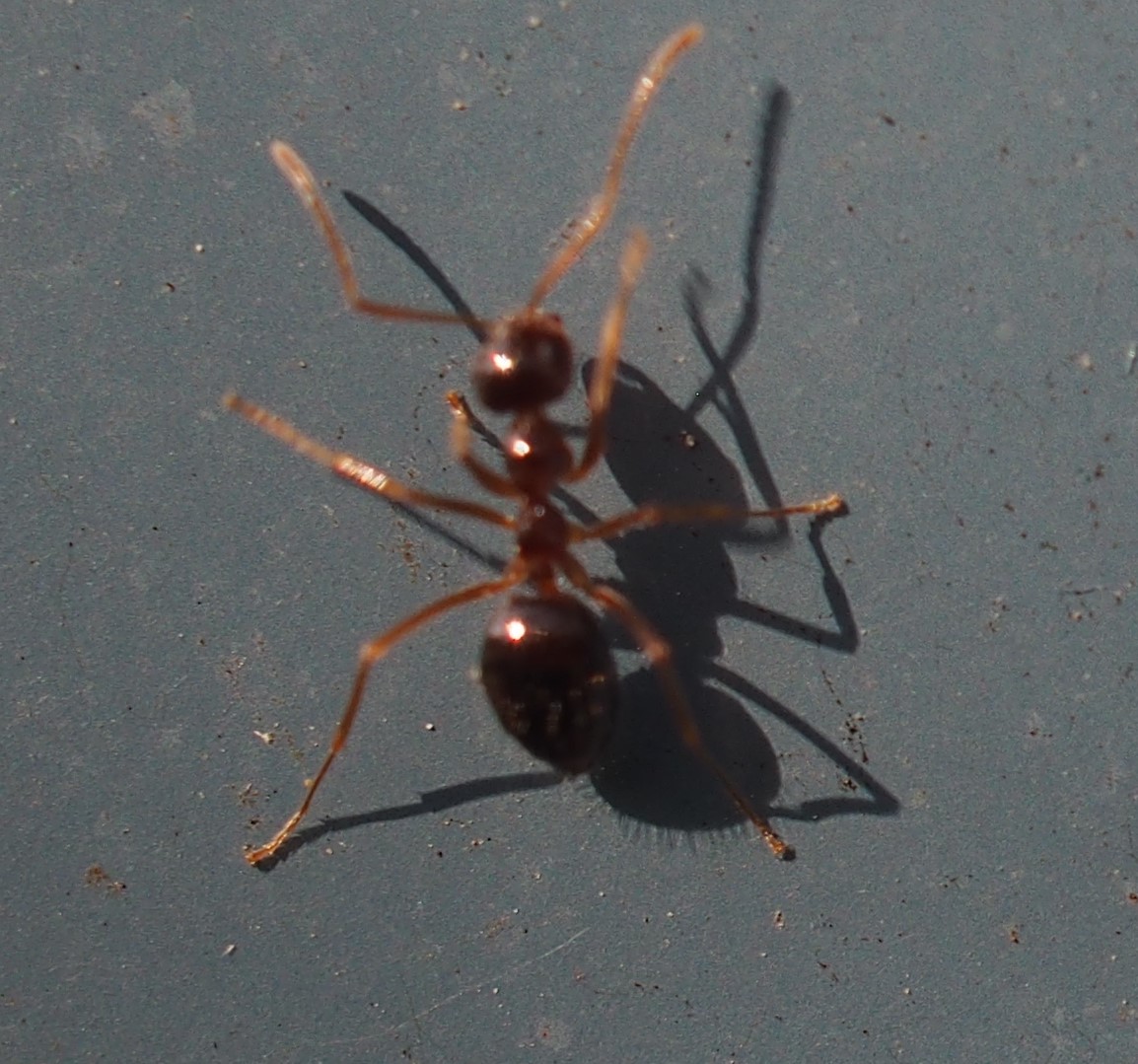
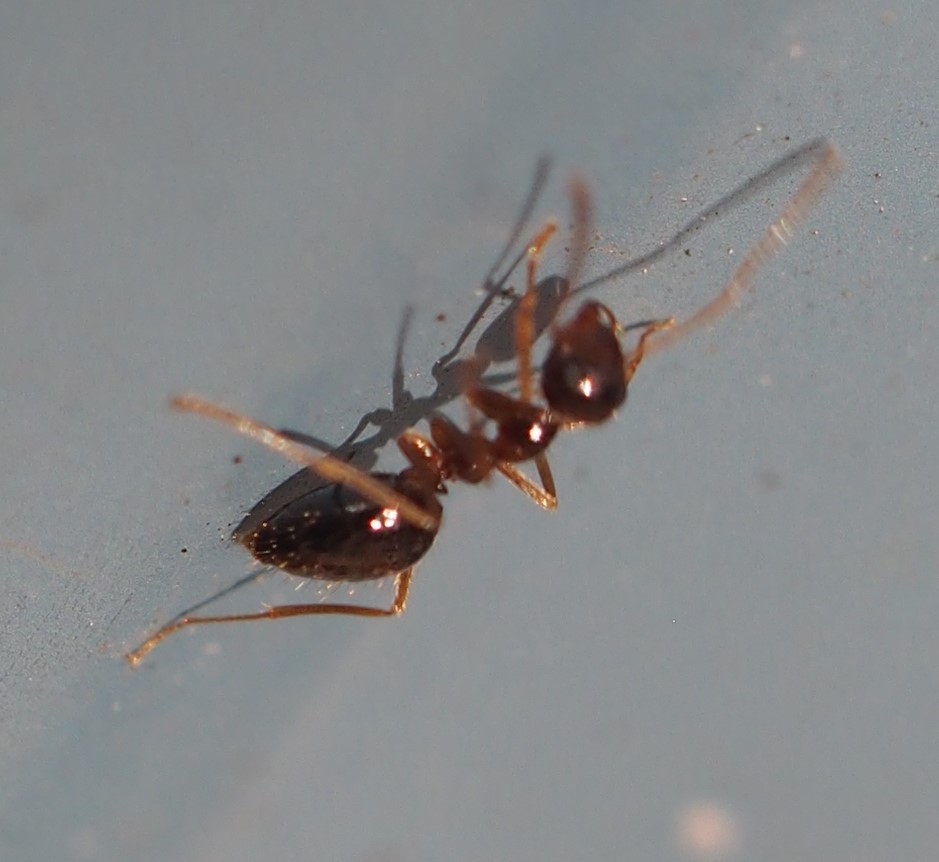
Remember that there is information in the name of the file for each image. You can see it by mousing over the image - look at the lower left of the screen. Or you can click again on the image to get to the (usually) larger image. Then the info is displayed in the address line above. Sometimes the second click will actually display a different view of the original image.
Guess what? At least one species of Bee is back - do they ever love those Winter Aconites! I'm told that if you see a Bee in Michigan at this time of year, it can only be the Western Honey Bee! And that's who was out there for the past few days. Picture 1 shows the Aconites in a lovely little bunch. The next two show the Aconites with one Bee each.
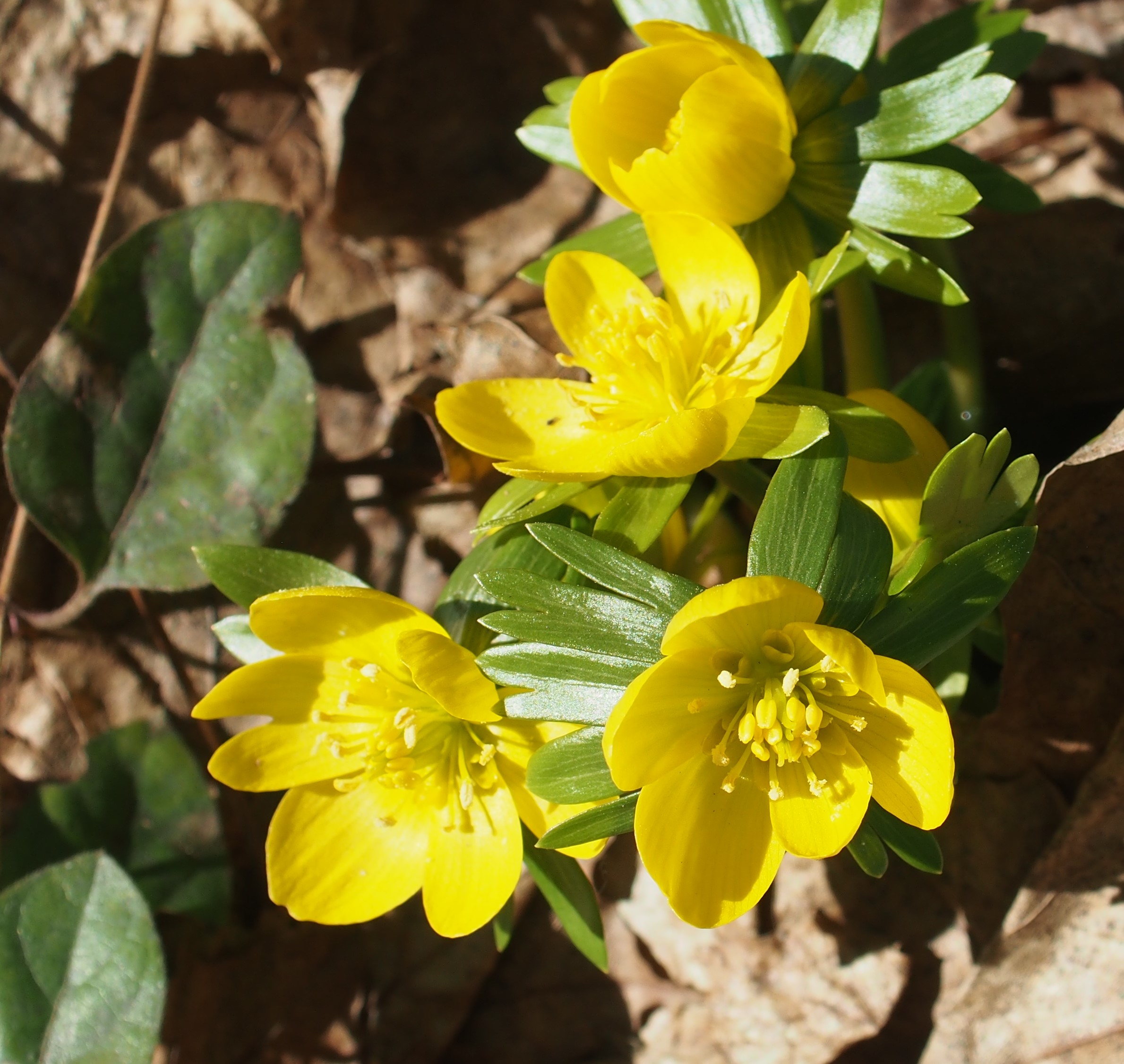
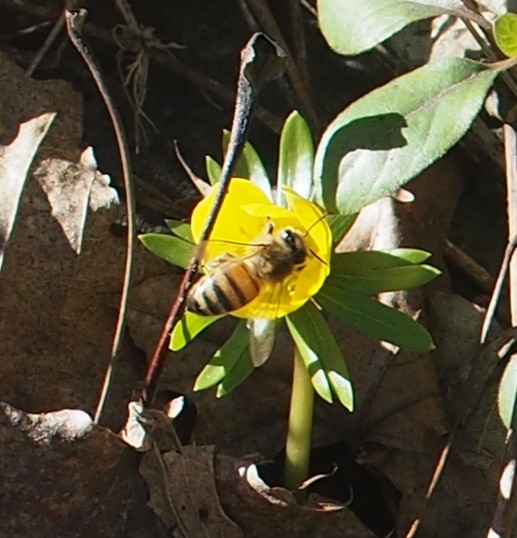
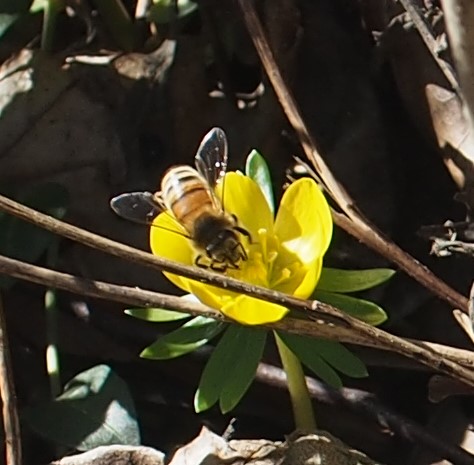
This first little Beetle is a Dermestid Beetle. Those are the tiny Beetles whose larvae get into your butterfly collection and eat up the good stuff inside the skin of your beautiful butterflies, or, especially, Moths! I wonder if they help me to get rid of the Boxelder Bugs that die in the house!! On Valentine's Day, these two species of Rove Beetles showed up on the Wall of Fame out back. One is probably in the tribe Oxytelini, and the other in the subfamily Aleocharinae. These Beetles seem to be very hard to identify to species. By the way, the third little fellow is actually quite a bit smaller than the second.
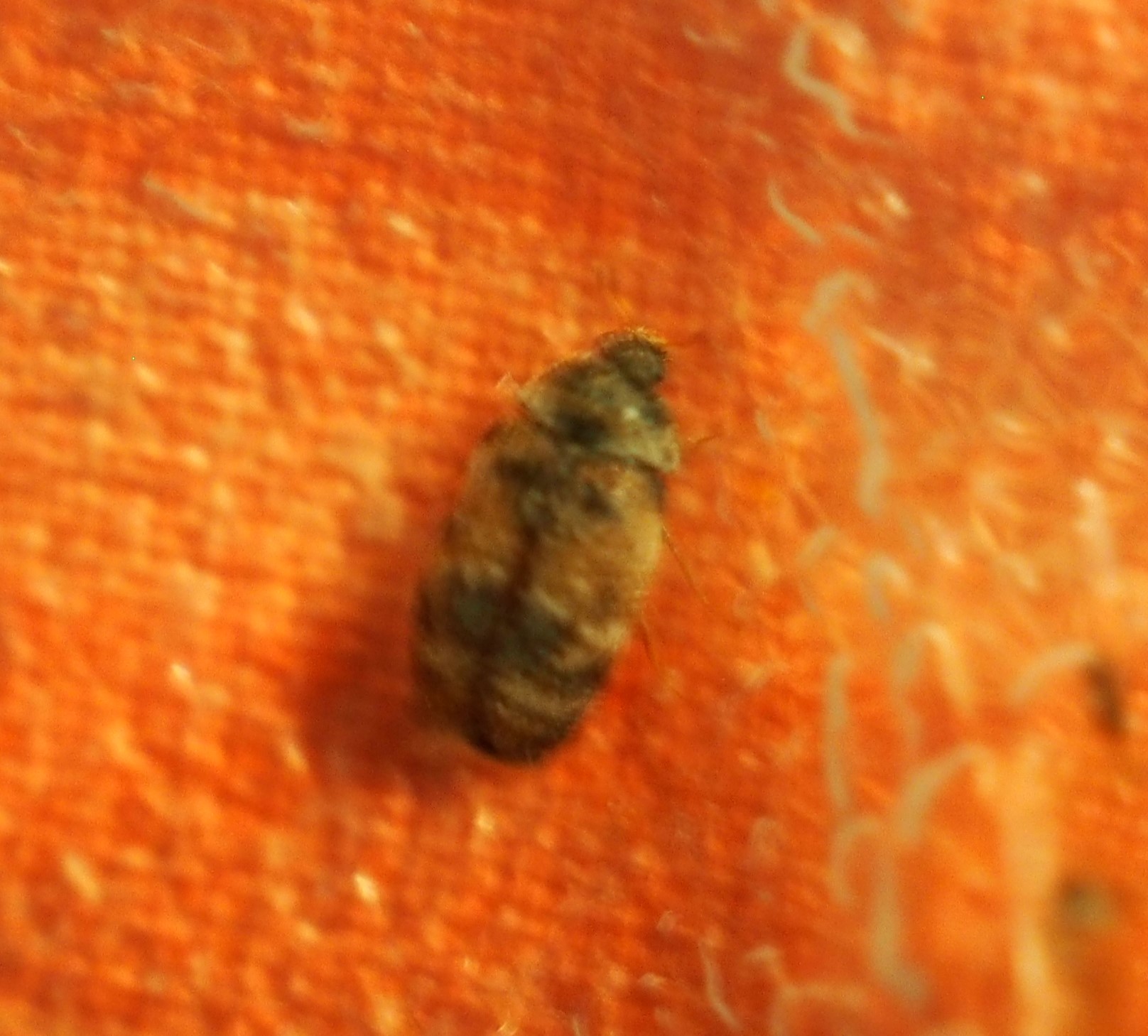
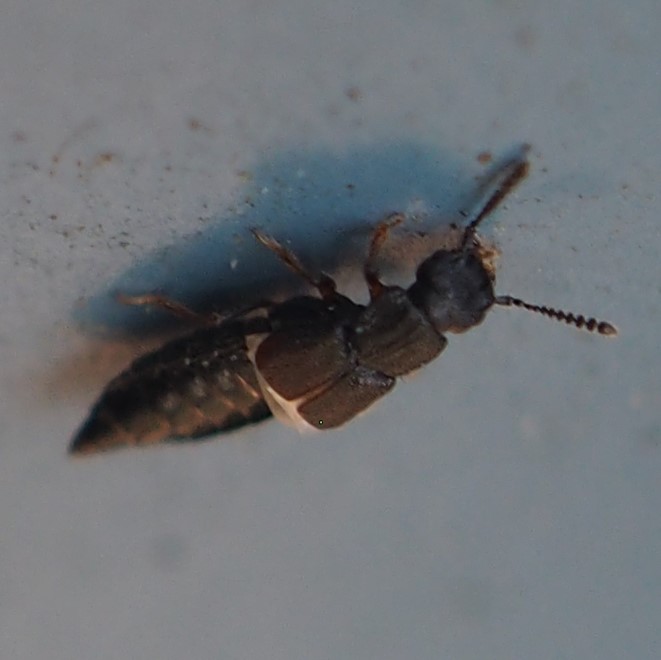
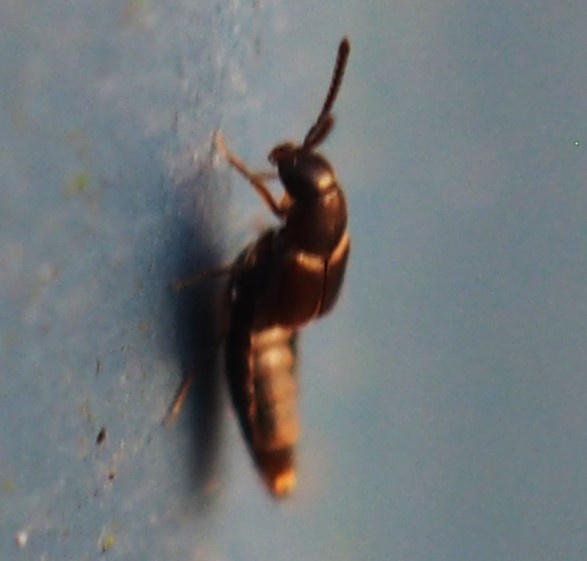
The Eastern Boxelder Bugs are thriving indoors and out. This first one was outdoors playing with its reflection. In fact, both of these were found outdoors on the South and East Walls. Last, our old faithful Drymus unus "dirt-colored bug" (that's what they call that batch of bugs) is STILL here. Remember they've been here since the Goldenrod (remember it?) started to dry up, and keep showing up.

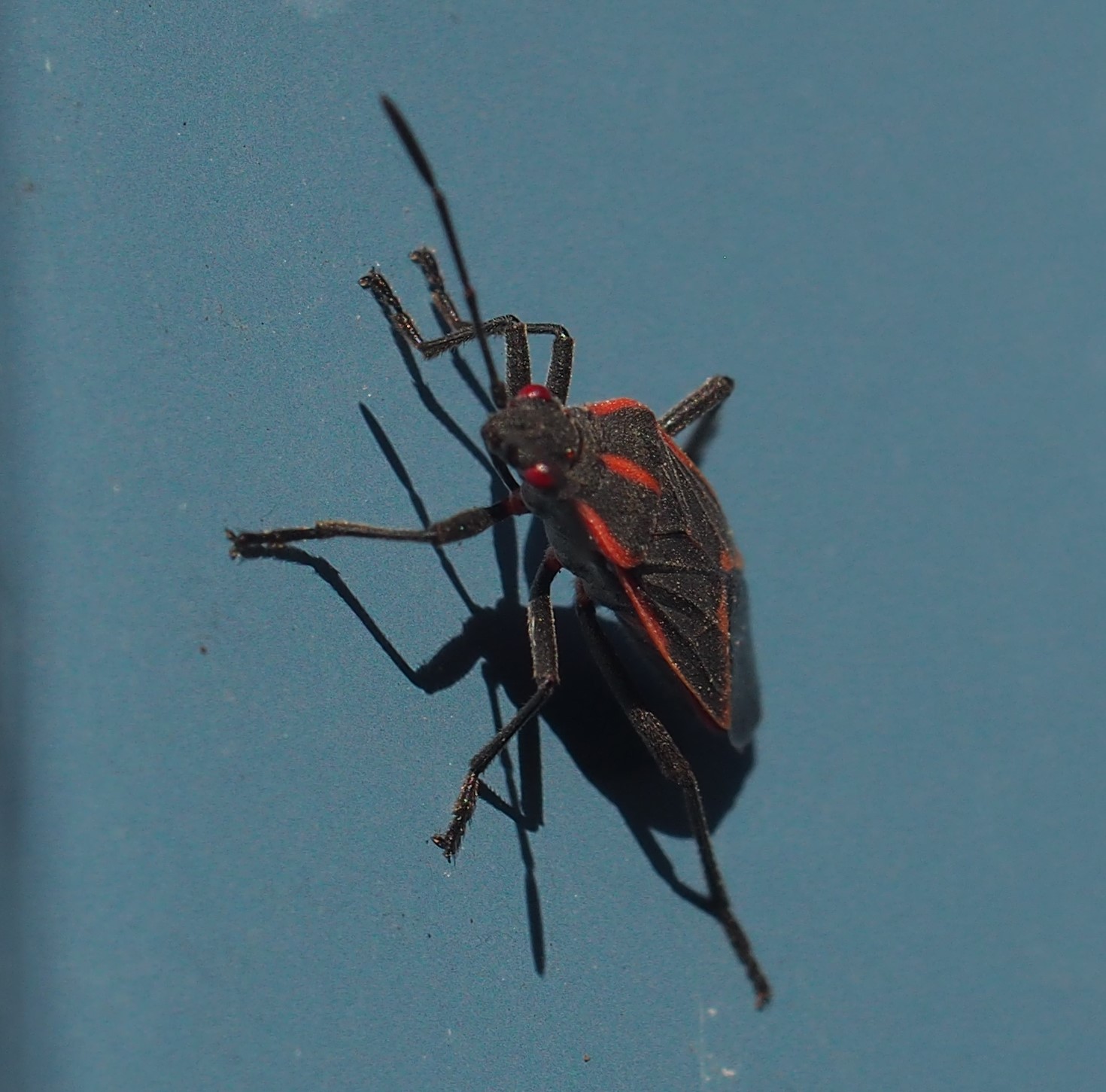

This week we got THREE Leafhoppers. The first two seem to be two different species in the genus Balclutha. But the third one is a really old friend Erasmoneura vulnerata. Leafhoppers apparently overwinter as adults (like these) but keep in hiding until Spring is expected (which won't be soon if the weatherpeople are right).
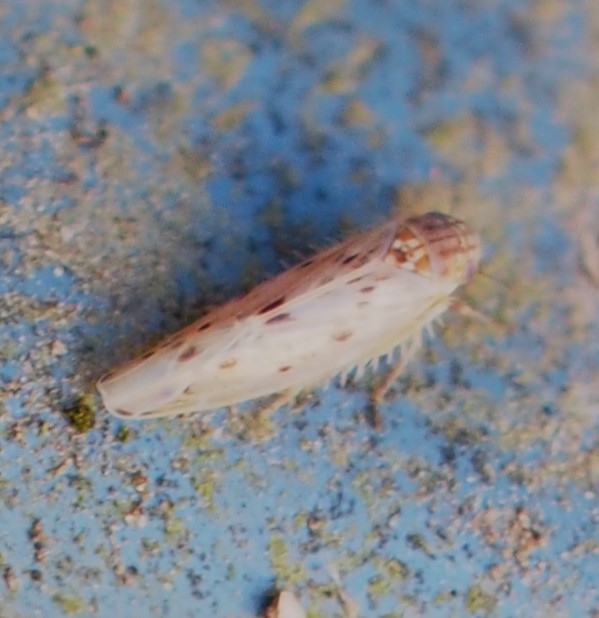
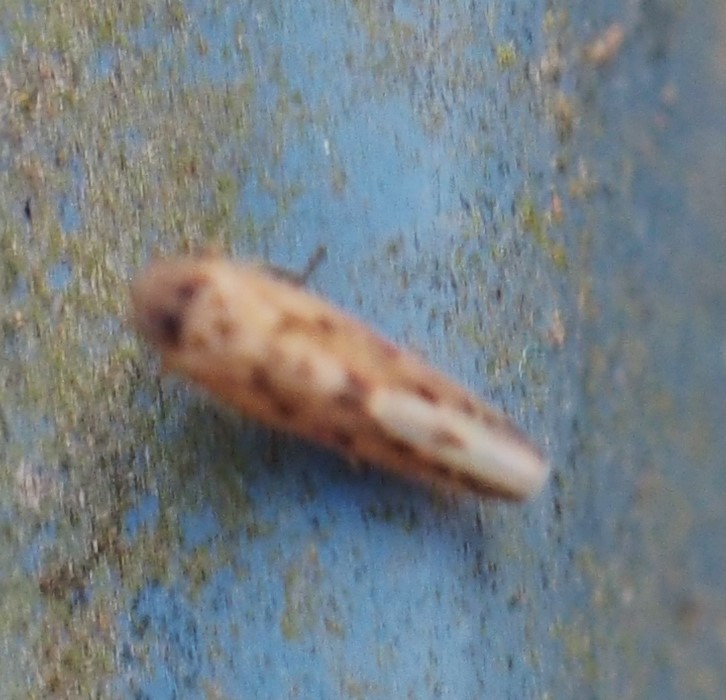
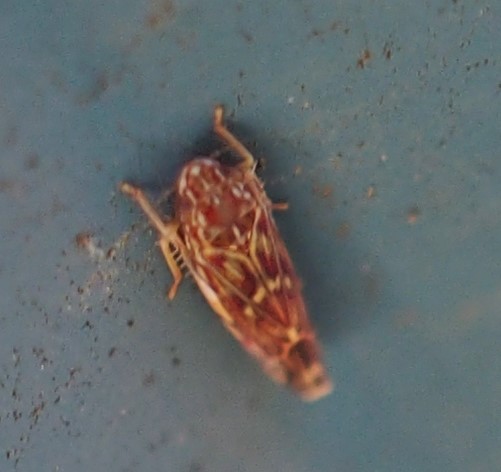
Although the Barklice were not much in evidence, their egg clutches are all over the South, East, and North Walls. That's it - no Adults or even Nymphs walked in front of the lens.
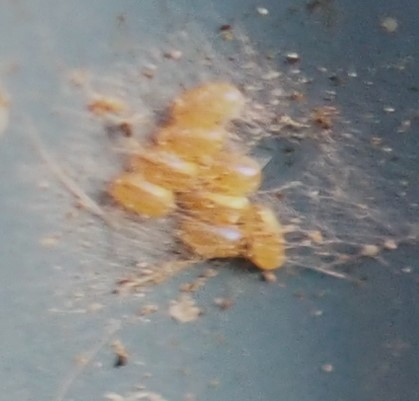
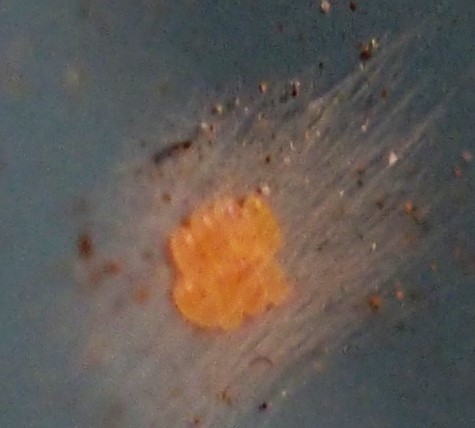
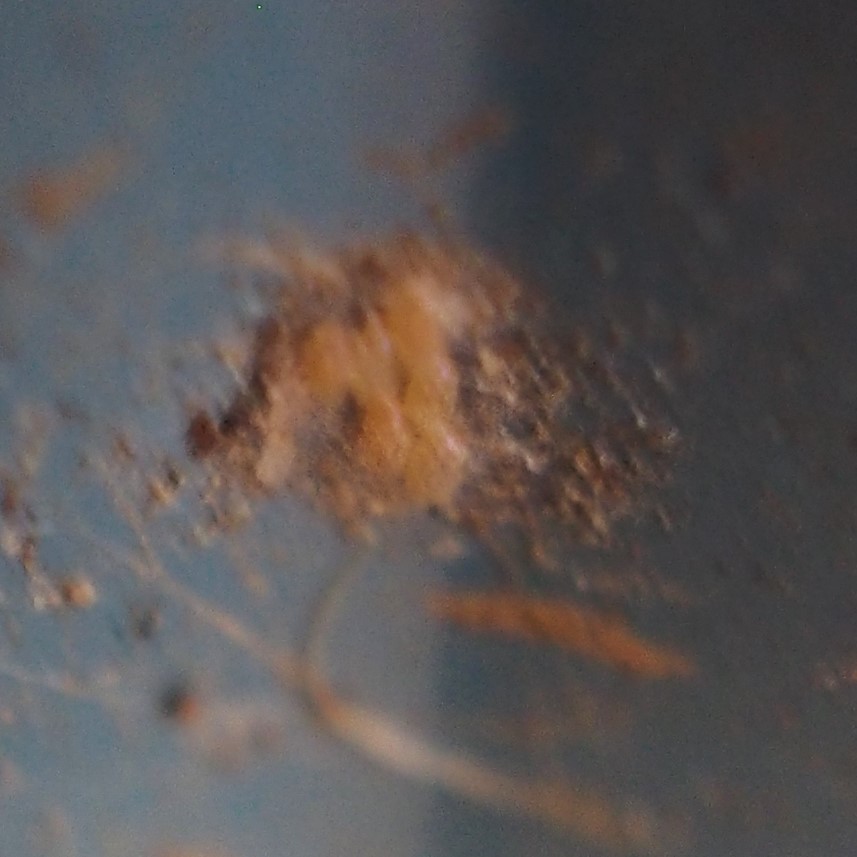
Just a few Plants as they head toward Spring. First is the Japonica budding up on the South side of the house. Then a nice bunch of Snowdrops in the Seelys' yard. Third is one of the Bur Oak saplings with a nice batch of big buds at the end of a branch-to-be, and, in the middle of the stem (near the top of the picture), a Gall possibly made by one of the Gall Wasps you saw last week.
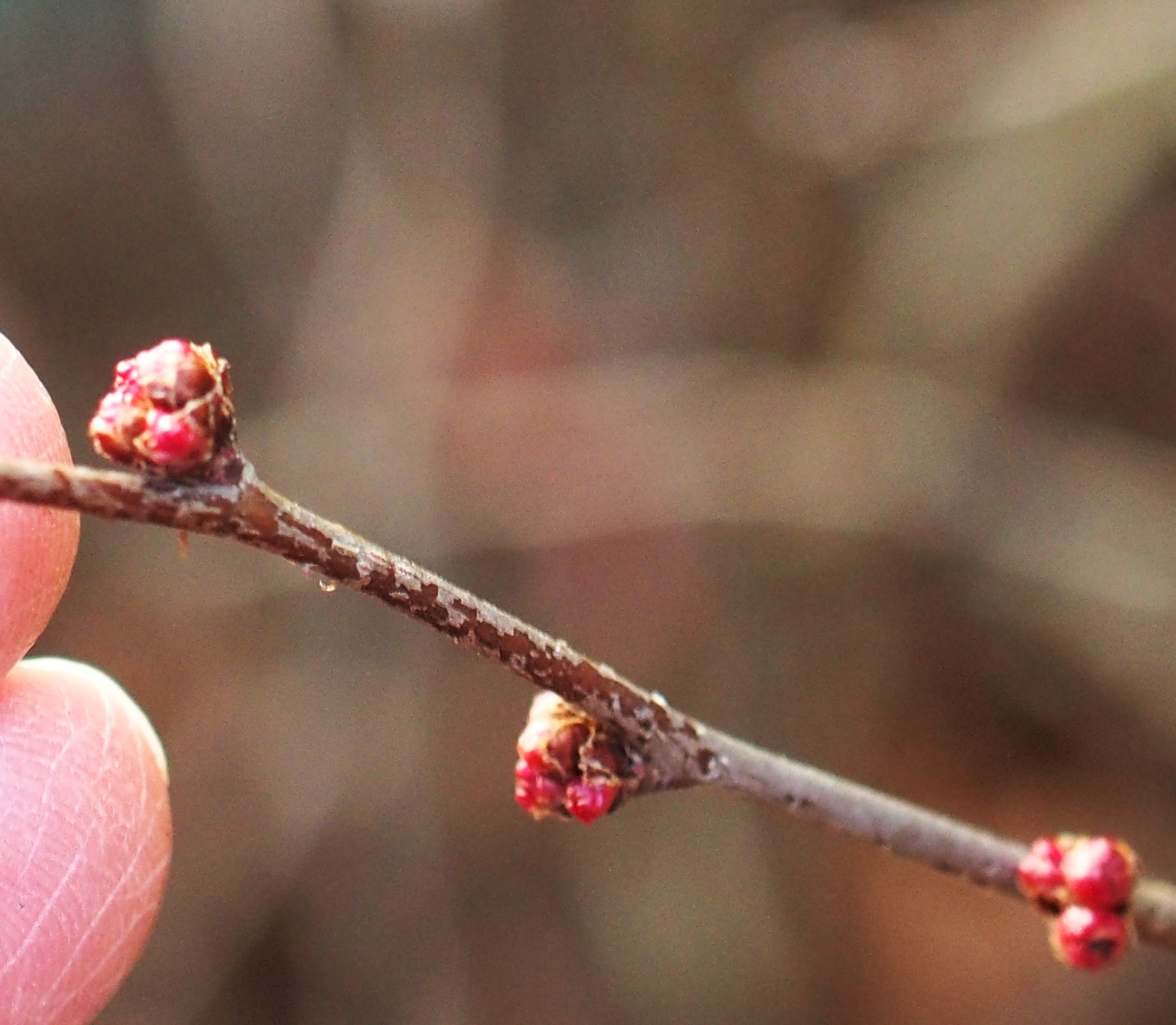
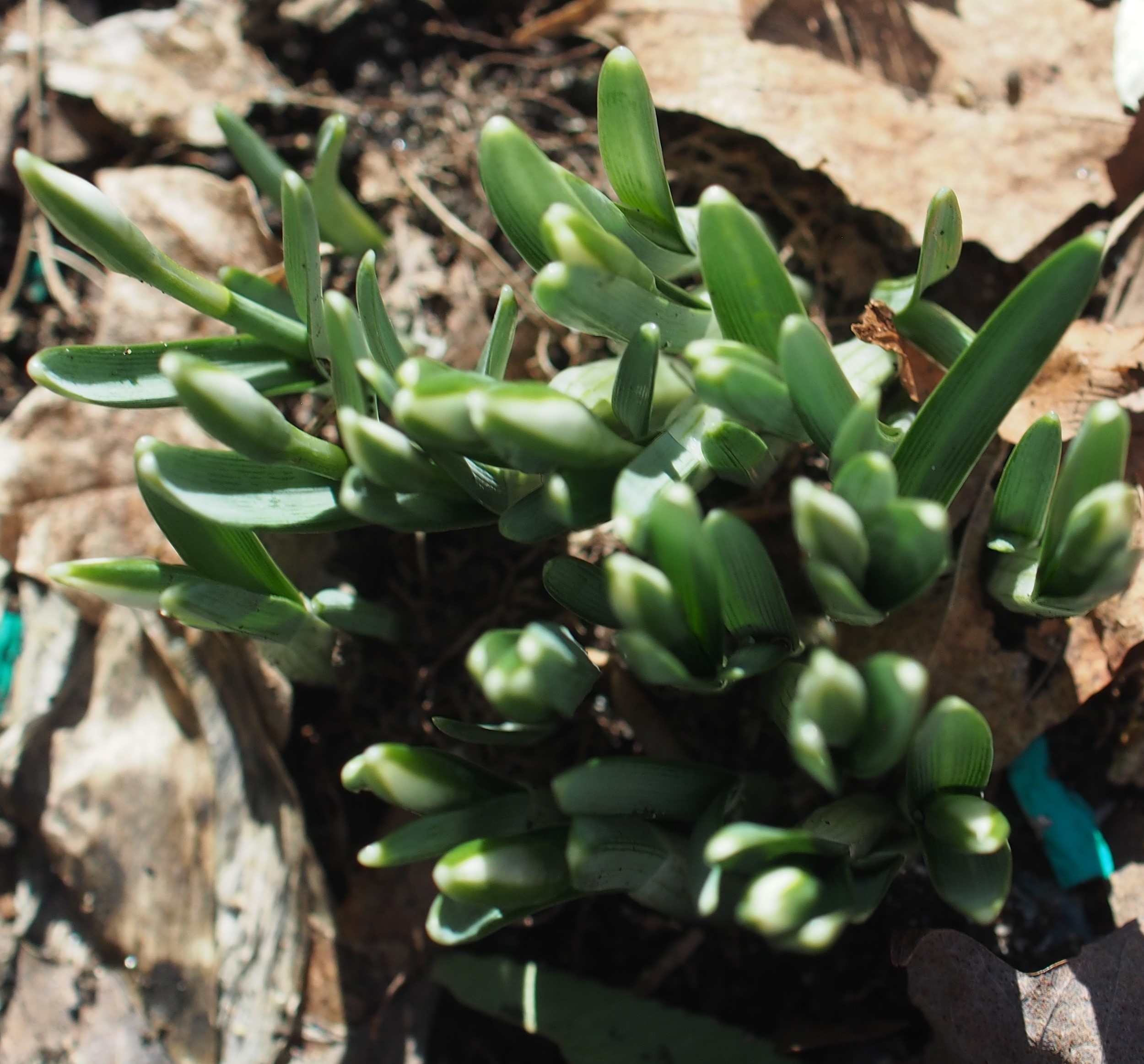
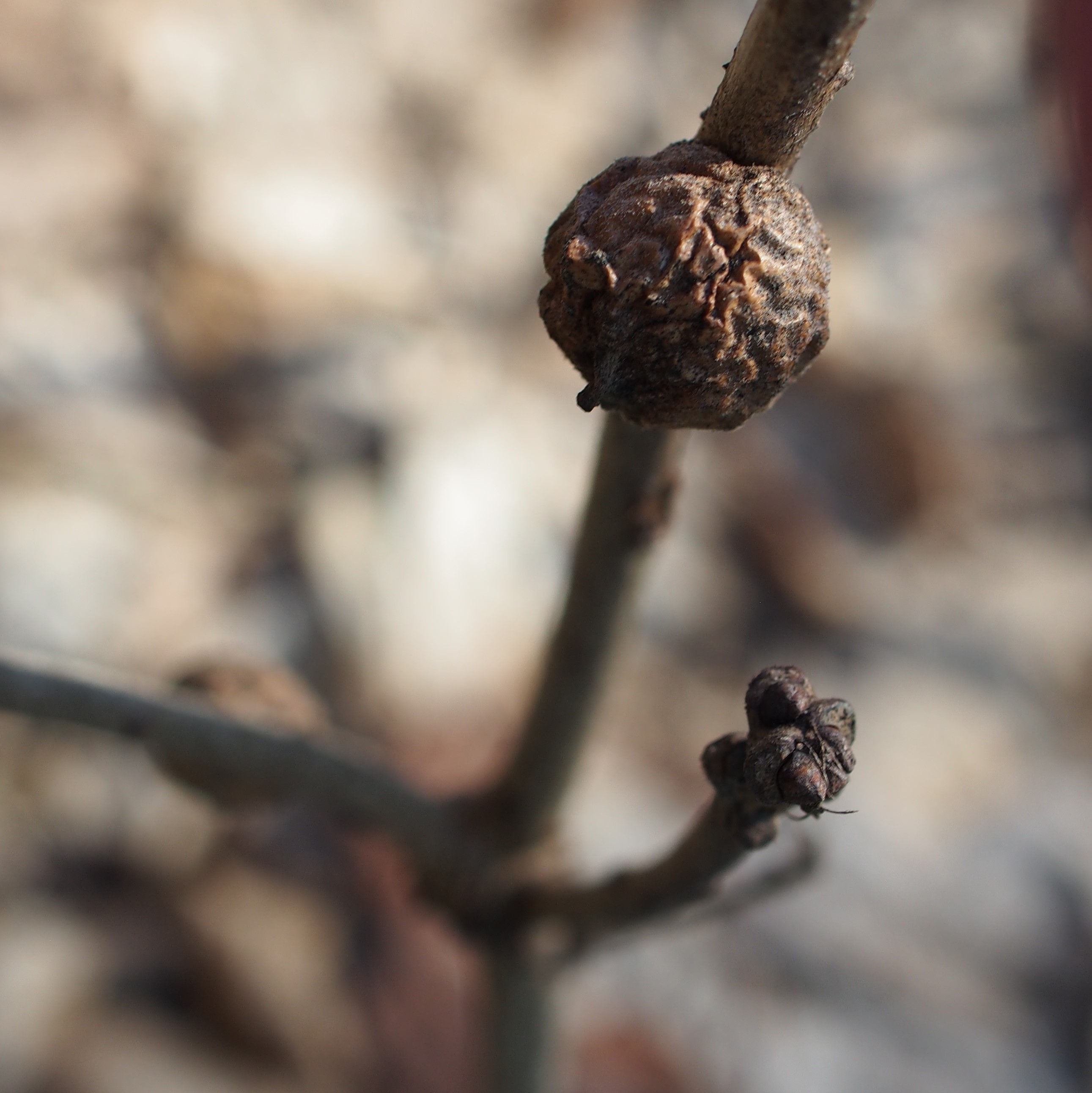
Here are some of the Spiders we saw out back, mostly on the Eastern side of the woodshop. Probably the most-frequently seen Spider was this "hump-headed" Black Dwarf Spider. Here on the right, you can see how very fast they are capable of running!
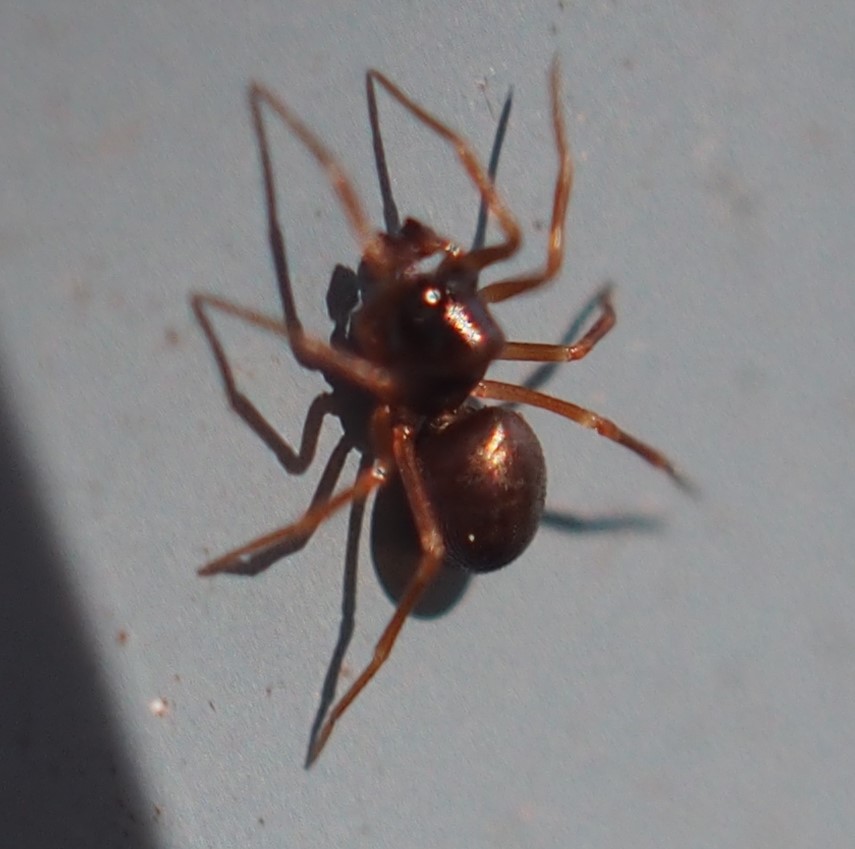
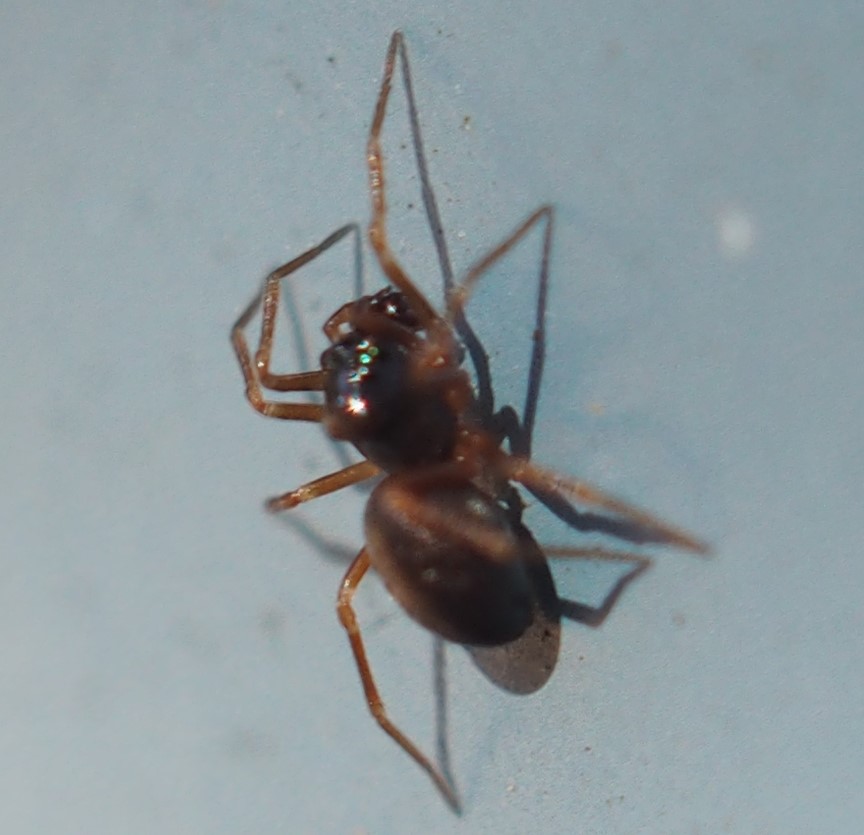

Next is one of those larger Crab Spiders. This one seems to belong in genus Bassaniana because of its heart-shaped head section ("carapace").
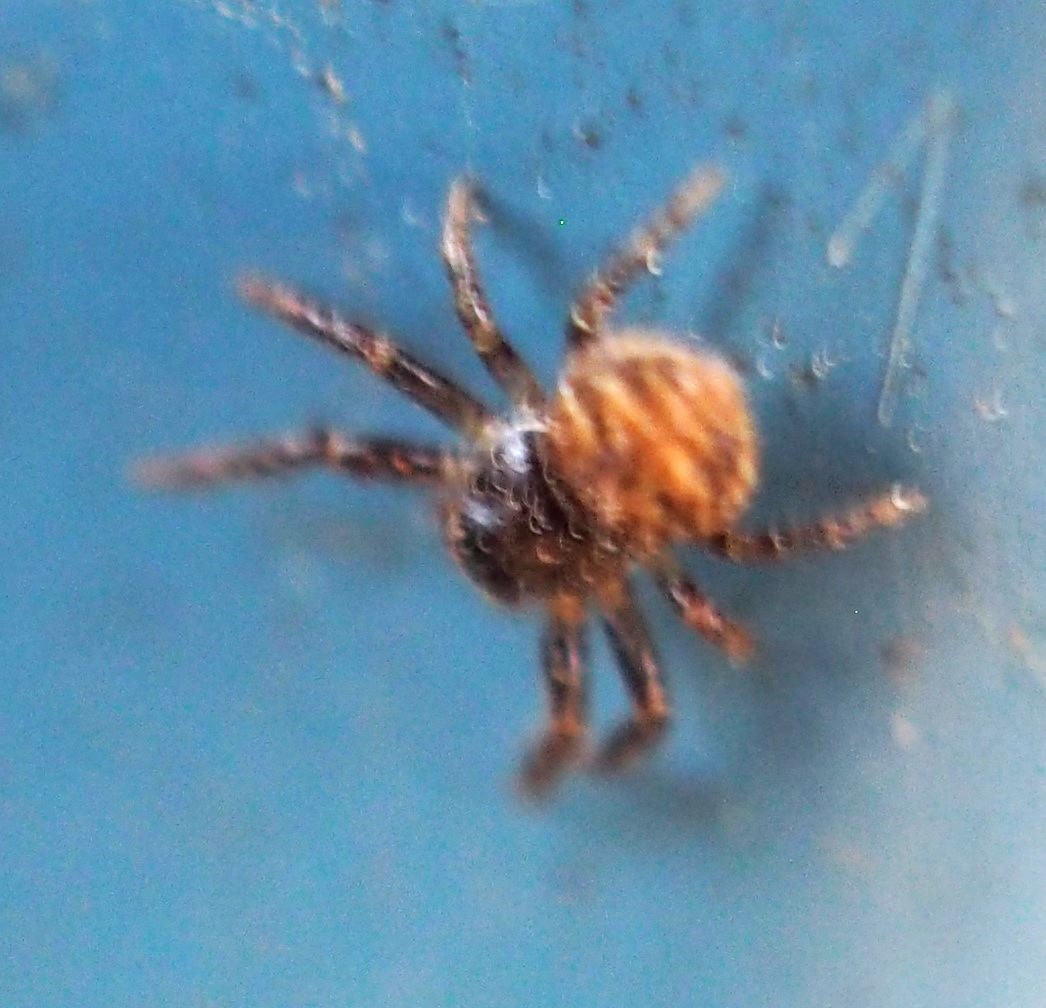
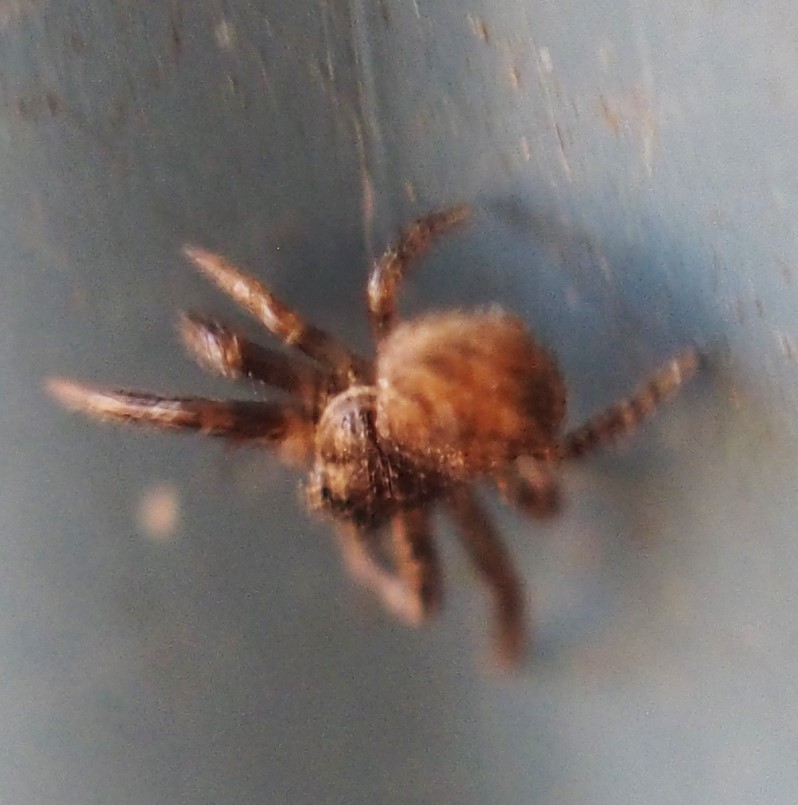
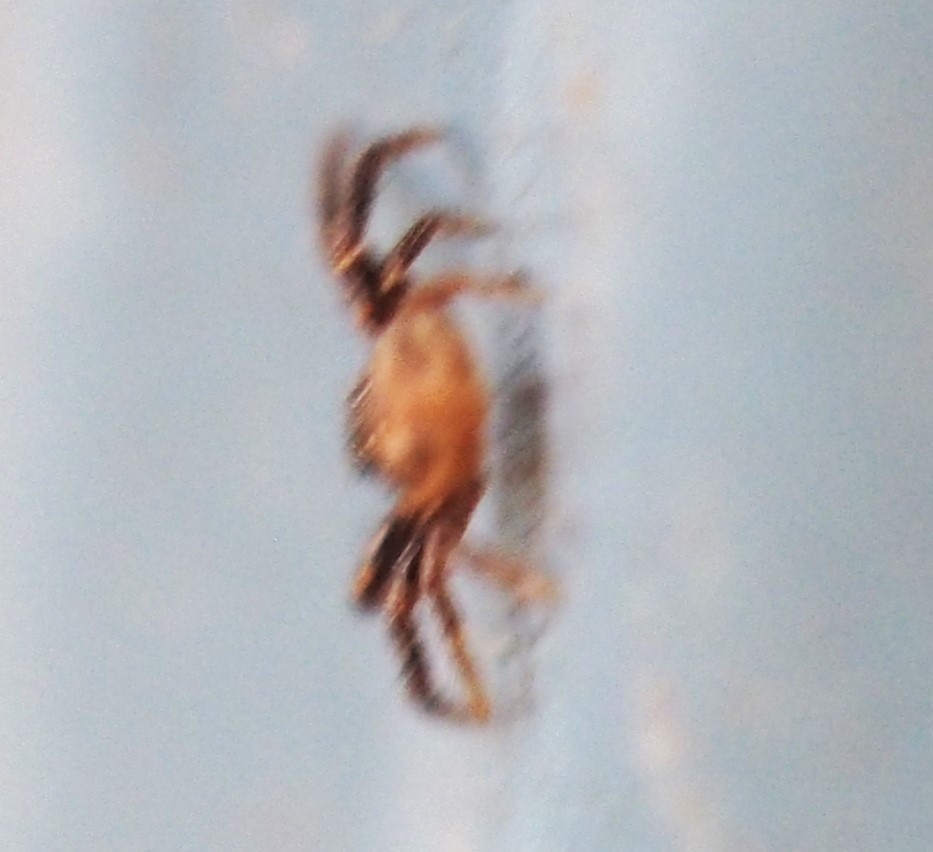
As we discussed last week, the Tuberculated Crab Spider (pictures 1 and 2) resembles in size and to some extent in shape the White-legged Running Crab Spider. This is especially confusing since the TC Spider's abdomen is shaped so much like all the Running Crab Spiders' abdomens. Strictly speaking the TCS's are not classified as Running Crab Spiders, but rather as Octopus Crab Spider, probably because of the length of its legs. Picture 3 shows a White-legged Running Crab Spider. I think one of the confusions in this name is that the legs are NOT all white, but rather banded with white rings around the legs at each joint. If I were inventing the taxonomy, I would have called it the White-banded Running Crab Spider! Now we aren't confused anymore, are we?
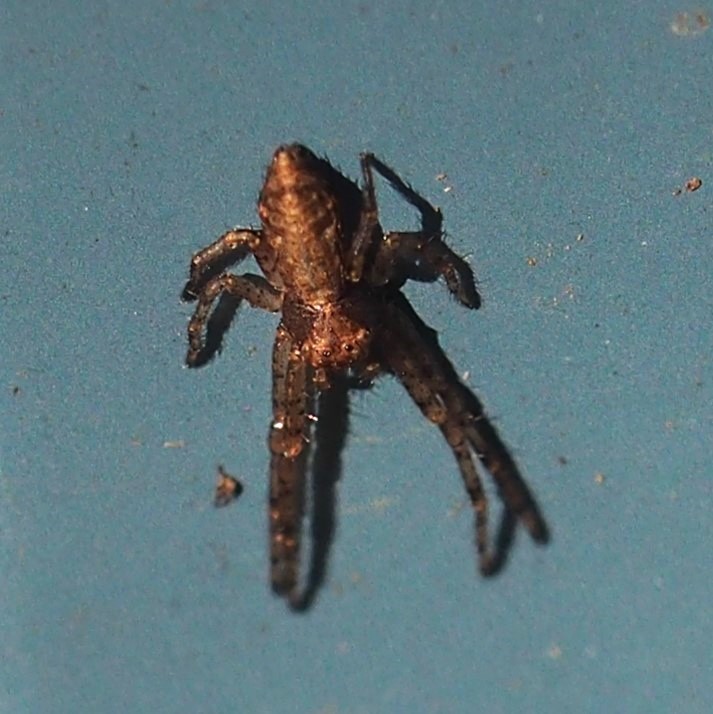
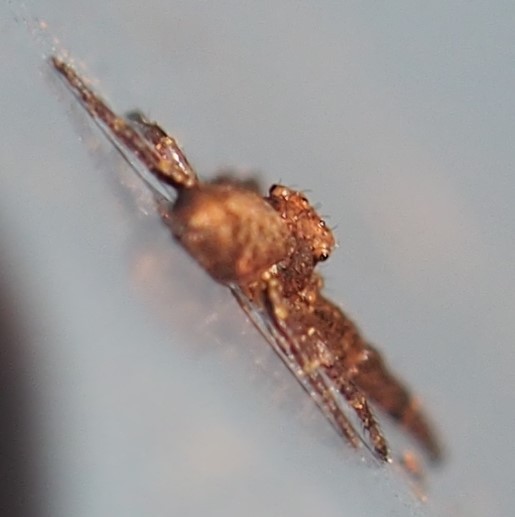
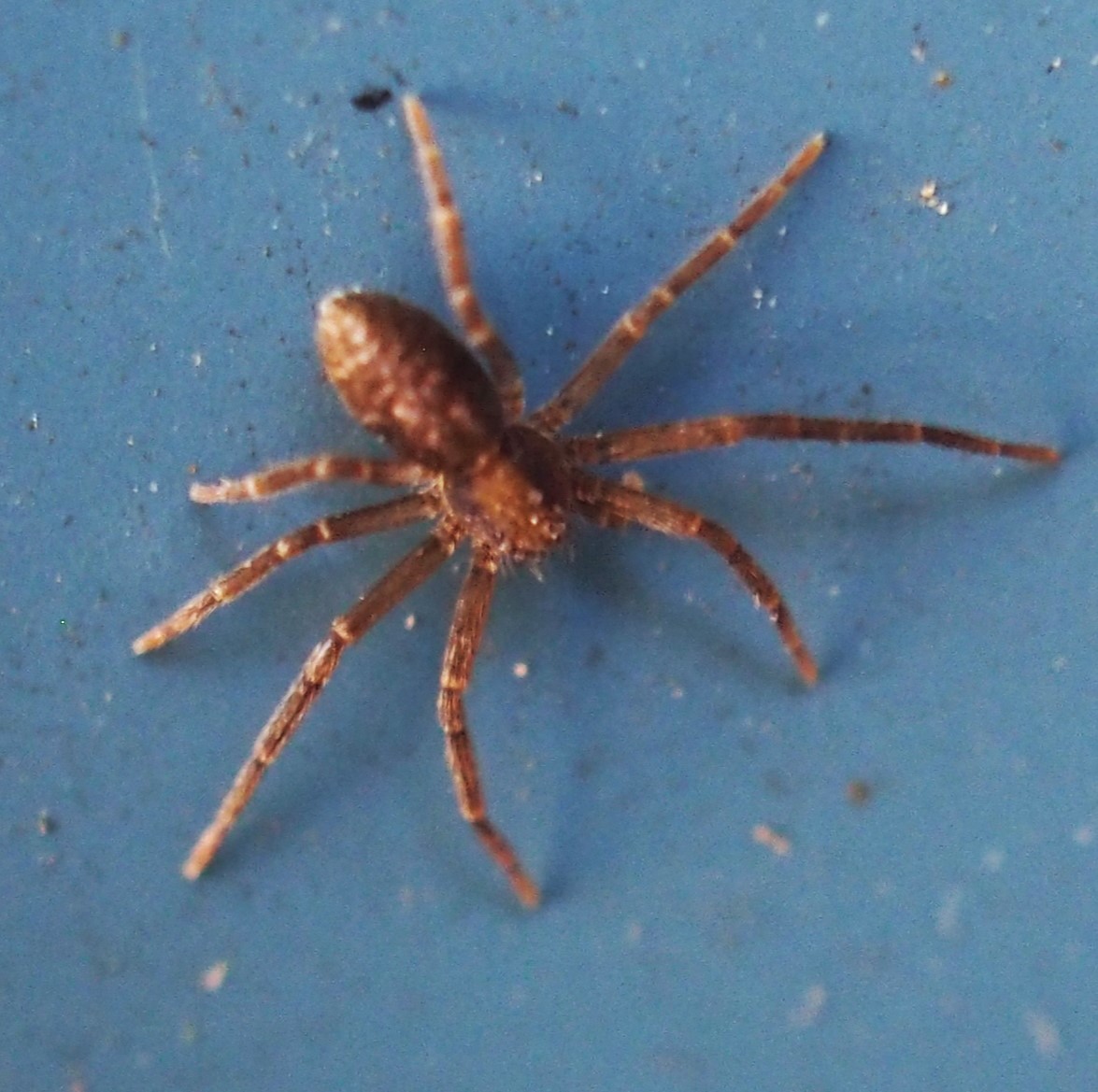
Here is a tiny yellow-orange Spider. It was identified as a Sheetweb or Dwarf Spider. Picture 2 shows it walking, rather running, along.


I saved this one for the last. Some months ago I told you about some of the wonderful little Spiders that sometimes surprise me in the winter. Well, the other day, February 12, to be exact, this Long-jawed Humpbacked Spider (Eustala anastera) appeared on the Eastern Wall. Picture 3 shows it on March 8, 2016.
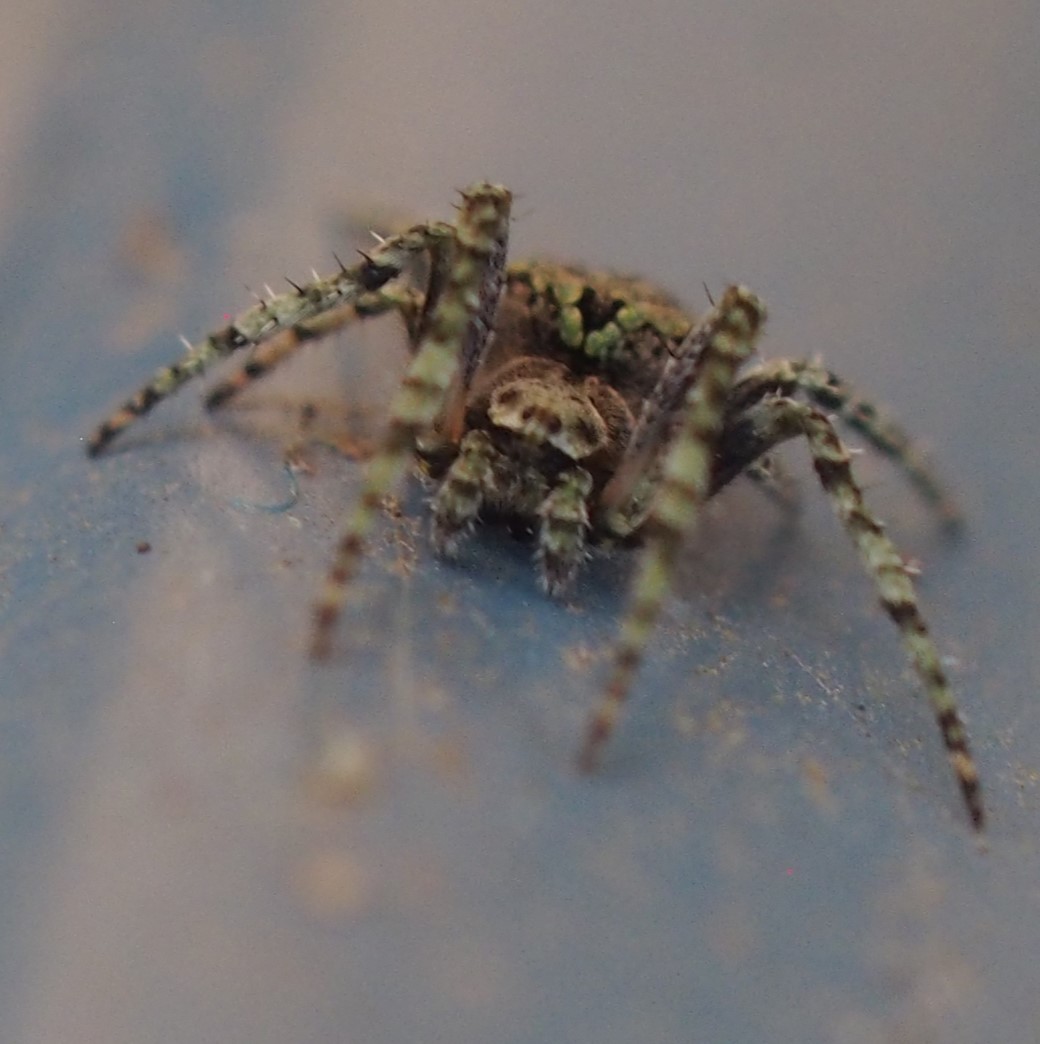
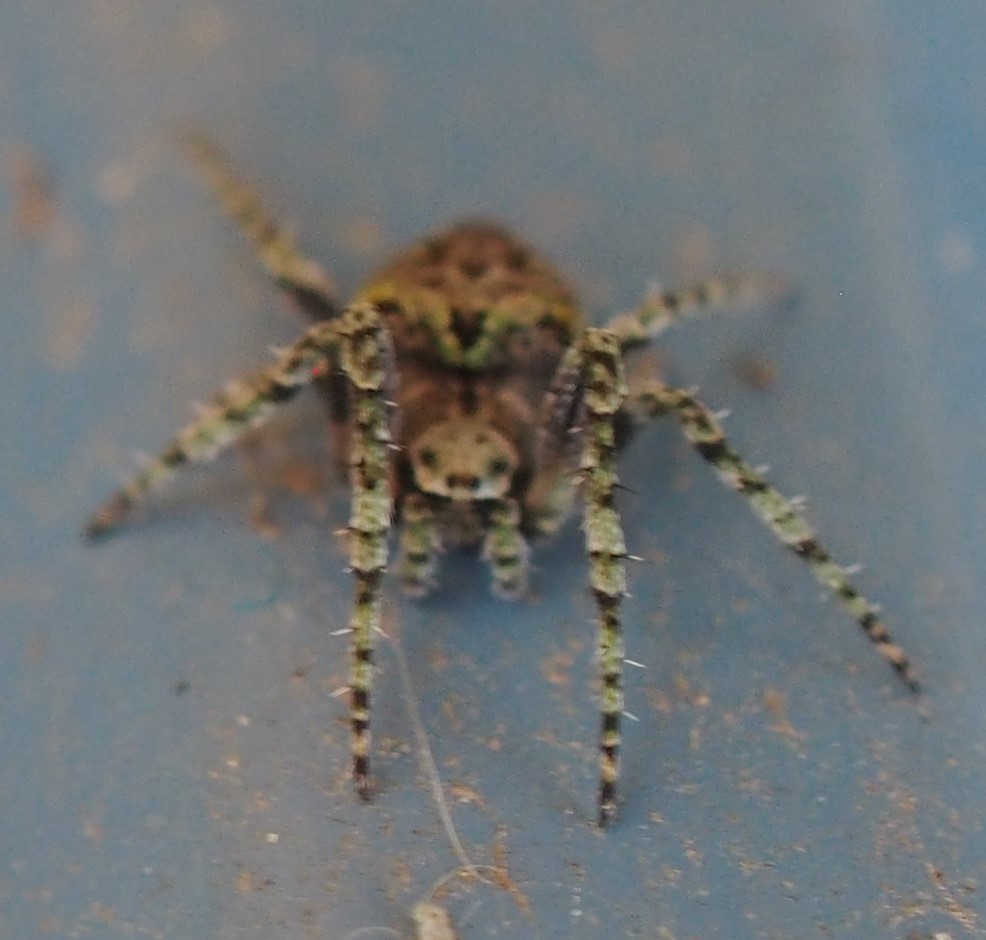

I'll leave you with some pictures from the Pond. Here you can spot at the far left a very small fish with a red nose. It isn't the white-nosed fish Seymour who was born a couple of years ago, but it's one of the babies of the 2022 season.
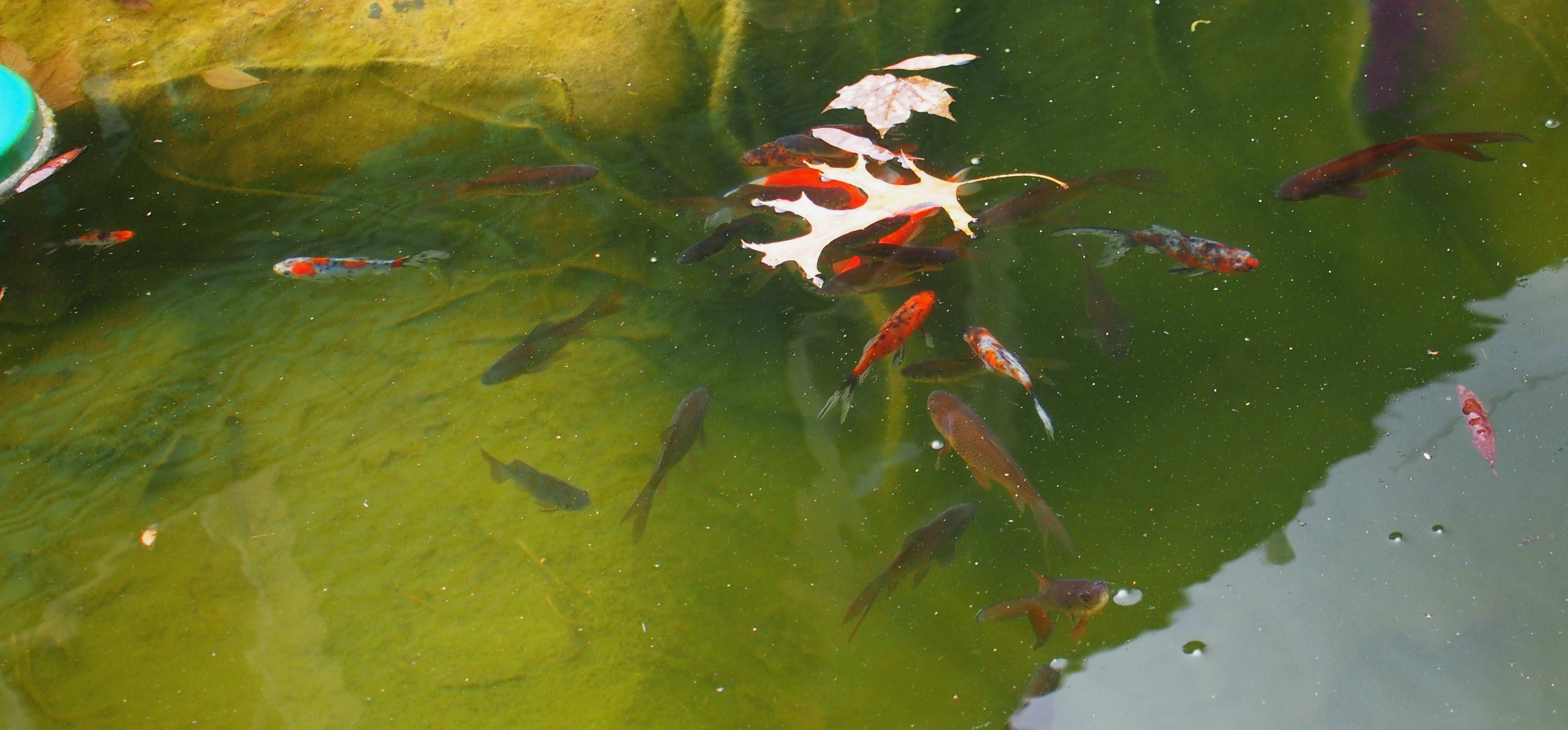
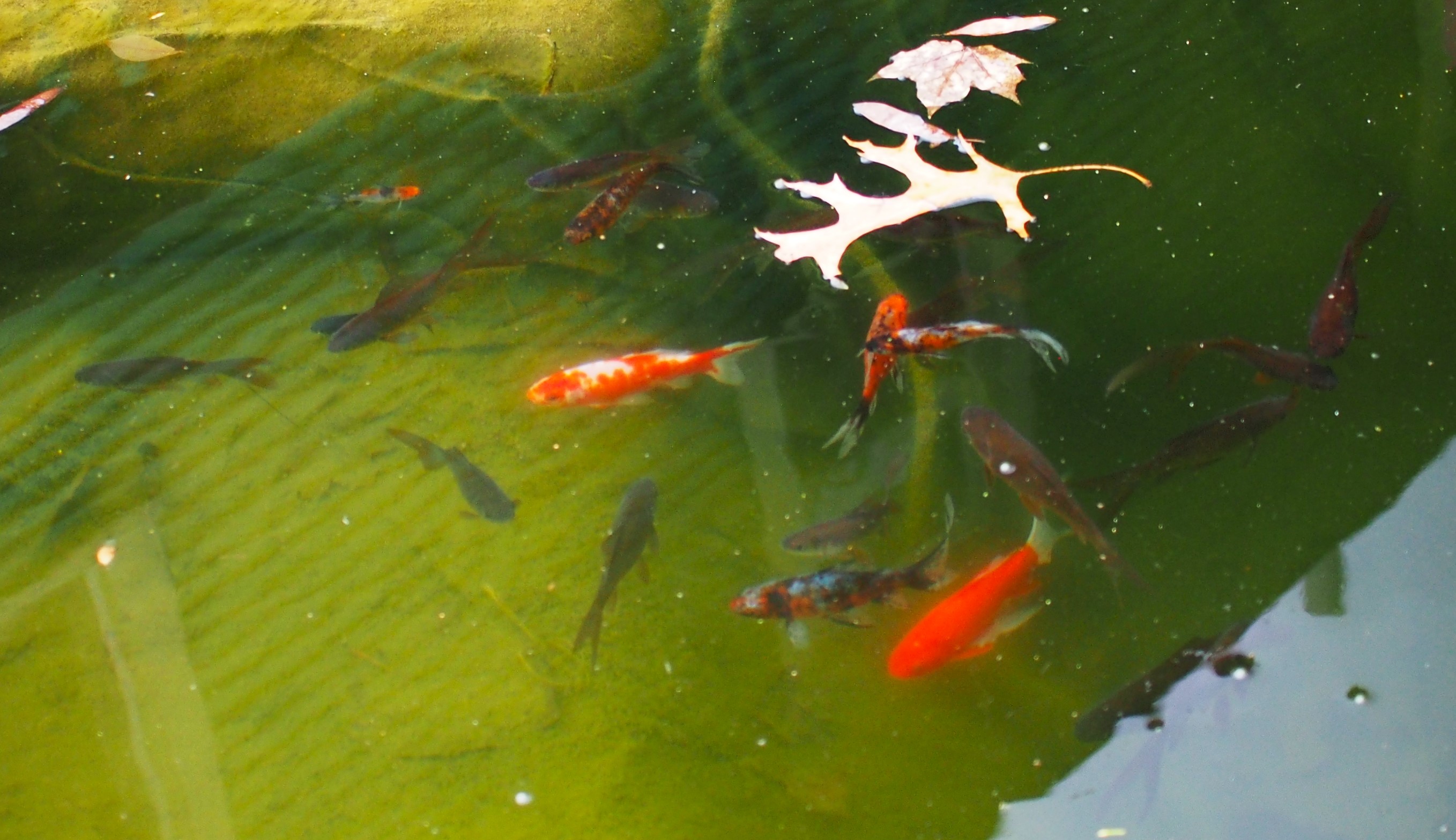
Here's a scene from under the ice before it broke up and then re-froze! It's amazing that they can live in such cold water. Here they're moving in Largo mode. If they were to be fed now they would quickly sicken and die. Patience, babies, Spring WILL come!
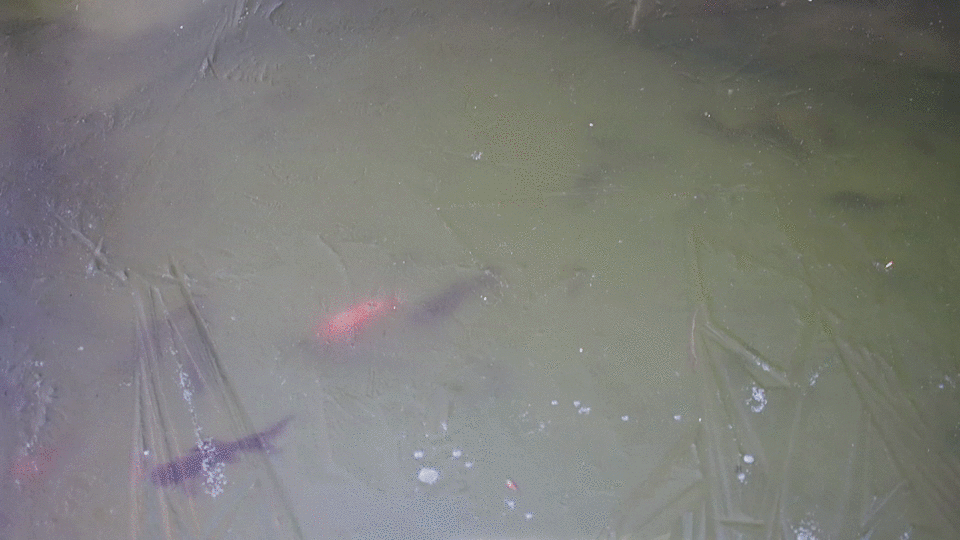
Hard to imagine, but our February Classes (AALL) have only one more week to go. It has been nice to have a lot of things to attend and think about. Now we are busily working up what hopes to be a very full May term. Films, Faith, Investing, and Animal Communication! Is that varied enough? But let me take a break for now. The sun decided to shine, and the temperature was rising an hour ago. See you again soon!
Love, Martha
Back to February 12 2023
Forward to February 26, 2023
Back to main menu
copyright Martha O'Kennon 2023







































